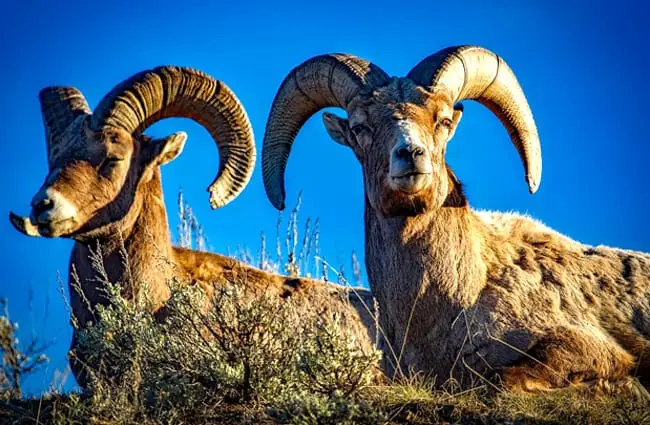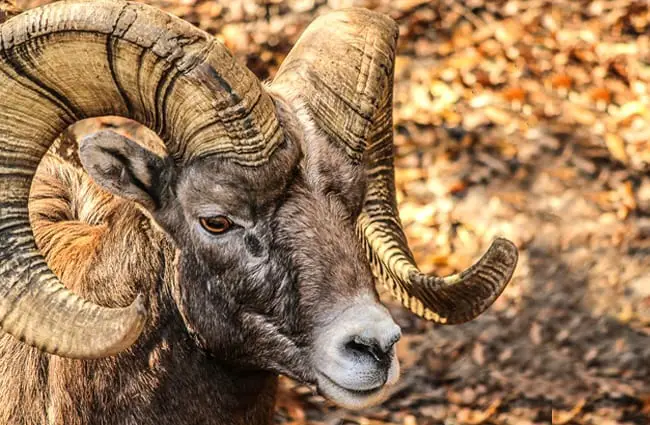Majestic Mountaineers: A Comprehensive Look at Bighorn Sheep
Bighorn Sheep, icons of the North American wilderness, are renowned for their impressive horns, incredible agility, and ability to thrive in seemingly inhospitable environments. These captivating creatures are more than just a beautiful sight; they play a vital role in their ecosystems and hold a unique place in both natural history and human culture. This guide explores every facet of the Bighorn Sheep, from its evolutionary origins to its modern‑day conservation status.

Origins and Evolution
A History Written in Stone
The story of the Bighorn Sheep begins millions of years ago, tracing back to the ancient ancestors of modern sheep and goats. Fossils reveal that these early relatives migrated across the Bering Land Bridge from Asia to North America. Over millennia, they diversified and adapted to the rugged landscapes of western North America, eventually evolving into the distinct species we know today – Ovis canadensis. Several subspecies exist, each uniquely suited to its specific range and environmental conditions. Genetic studies continue to refine our understanding of their evolutionary relationships and adaptations.
Habitat and Distribution
Where the Wild Things Are
Bighorn Sheep are masters of mountainous terrain. They inhabit the high altitude grasslands, open alpine meadows, and steep rocky slopes of western North America, ranging from southern Canada to northern Mexico and into the southwestern United States. They prefer areas with abundant vegetation for grazing and access to water sources, but also require rugged terrain that provides escape from predators and vantage points for spotting danger. Elevation plays a key role, with sheep typically found between 1,500 and 9,000 feet, though they can venture higher or lower depending on the season and food availability.
Diet and Foraging
A Grazing Lifestyle
Bighorn Sheep are herbivores, and their diet primarily consists of grasses, sedges, forbs, and shrubs. They are selective grazers, choosing nutritious plants and adapting their diet seasonally. In the spring and summer, they focus on new growth, while in the fall and winter, they may browse on shrubs and consume stored fats. They are also known to dig through snow to reach buried vegetation. Their digestive systems are highly efficient at extracting nutrients from tough plant matter. Minerals are crucial, and sheep often seek out natural salt licks or areas with mineral‑rich soil.

Social Structure and Behavior
Life in the Herd
Bighorn Sheep exhibit a complex social structure. They typically live in herds, which can vary in size from a few individuals to several hundred. These herds are often segregated by sex for much of the year, with rams (males) forming bachelor groups and ewes (females) and lambs forming nursery groups. A strict dominance hierarchy exists among rams, established through impressive displays of strength and ritualistic head‑butting contests known as “breaks.” These contests determine access to mating opportunities. Ewes also exhibit social ranking, influencing access to prime foraging areas.
Reproduction and Life Cycle
The Cycle of Life
The mating season, known as the “rut,” typically occurs in the fall. Rams engage in intense competition for access to ewes, showcasing their horns and engaging in head‑butting matches. Gestation lasts approximately six months, and ewes typically give birth to one or two lambs in the spring. Lambs are precocial, meaning they are born relatively well‑developed and capable of standing and moving soon after birth. They rely on their mothers for milk and protection for several months, gradually learning to forage and integrate into the herd. Bighorn Sheep can live for 10 to 15 years in the wild.

Ecological Role and Interactions
A Keystone Species
Bighorn Sheep play a crucial role in their ecosystems. As herbivores, they influence vegetation growth and distribution. Their grazing helps maintain the health of grasslands and prevent shrub encroachment. They also serve as prey for predators such as mountain lions, wolves, and coyotes, contributing to the food web. Their presence can also influence the behavior of other herbivores, such as elk and deer. They are sensitive indicators of environmental health, and declines in their populations can signal broader ecosystem problems.
Human Interactions and Conservation
A History of Challenges
Historically, Bighorn Sheep populations were significantly impacted by overhunting and habitat loss. Disease outbreaks, particularly pneumonia, have also caused significant declines in recent decades. Conservation efforts, including regulated hunting, habitat restoration, and disease management, have helped to stabilize and even increase populations in some areas. However, challenges remain, including ongoing habitat fragmentation, climate change, and the spread of invasive species. Responsible wildlife viewing and minimizing disturbance are crucial for their continued survival.

Spotting Bighorn Sheep in the Wild: A Guide for Enthusiasts
Tips for Observing These Majestic Creatures
- Location, Location, Location: Focus on mountainous regions of western North America. National Parks and Wilderness Areas are prime habitats.
- Time of Day: Early morning and late afternoon are often the best times to spot sheep, as they are most active during these cooler hours.
- Scan the Slopes: Look for rocky slopes and alpine meadows. Sheep often prefer these open areas for grazing and visibility.
- Binoculars are Essential: A good pair of binoculars will allow you to observe sheep from a safe distance without disturbing them.
- Respect Their Space: Maintain a safe distance and avoid approaching sheep. Never attempt to feed them.
Bighorn Sheep and Human Culture
A Symbol of the Wild West
Bighorn Sheep hold a significant place in the cultural heritage of western North America. They have been revered by Indigenous peoples for centuries, serving as a source of food, clothing, and spiritual symbolism. Their image is often featured in art, literature, and folklore. The impressive horns of rams have been historically prized as trophies and symbols of strength and resilience. Today, they remain a powerful symbol of the wild west and the importance of conservation.

For the Zookeeper: Caring for Bighorn Sheep in Captivity
Enrichment and Wellbeing
Caring for Bighorn Sheep in captivity requires a thorough understanding of their natural history and behavioral needs.
- Habitat: Provide a large, rocky enclosure with ample space for movement and exploration. Mimic their natural mountainous habitat with varying terrain.
- Diet: Offer a balanced diet of high‑quality hay, grasses, and supplemental feed. Provide access to mineral licks.
- Socialization: House sheep in groups to allow for natural social interactions.
- Enrichment: Provide enrichment activities such as browse, puzzle feeders, and scent trails to stimulate their minds and keep them engaged.
- Health: Implement a preventative health program to monitor for common diseases and parasites.
Avoid: Overcrowding, lack of stimulation, and unnatural diets. Frequent and unnecessary handling should also be avoided.
Fascinating Facts About Bighorn Sheep
- The horns of Bighorn Sheep grow continuously throughout their lives, adding another inch or more each year.
- Rams use their horns as weapons in battles for dominance, but also as tools for breaking ice to access water.
- Bighorn Sheep can leap up to 20 feet in a single bound.
- They have split hooves that provide excellent traction on rocky terrain.
- Their thick winter coats provide insulation against harsh weather conditions.
- Bighorn Sheep are surprisingly good swimmers.
- Lambs can recognize their mothers by their bleat.
Bighorn Sheep are truly remarkable creatures, embodying the wild spirit of the North American mountains. Their resilience, adaptability, and majestic presence continue to inspire awe and wonder. By understanding and appreciating these magnificent animals, we can ensure their survival for generations to come.

![Red Angus Closeup of a beautiful Red Angus cowPhoto by: U.S. Department of Agriculture [pubic domain]https://creativecommons.org/licenses/by/2.0/](https://animals.net/wp-content/uploads/2020/03/Red-Angus-4-238x178.jpg)




![Red Angus Closeup of a beautiful Red Angus cowPhoto by: U.S. Department of Agriculture [pubic domain]https://creativecommons.org/licenses/by/2.0/](https://animals.net/wp-content/uploads/2020/03/Red-Angus-4-100x75.jpg)

